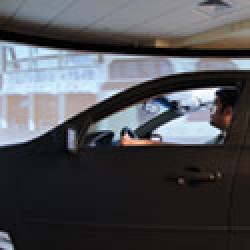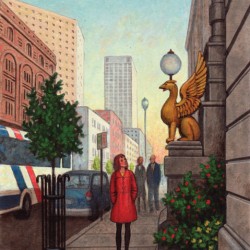Driven to Distraction
How do we keep drivers’ minds on the road?

Sending and reading text messages are the most distracting activities that drivers commonly engage in. According to John Lee, people are twenty-three times more likely to get into an accident while texting than non-texters. In comparison, intoxicated drivers are only four to eight times as likely to crash. Photo: ISTOCK
John Lee knows that the most dangerous thing on the road is a driver whose eyes aren’t.
Lee joined the industrial and systems engineering faculty in fall 2009, and brings an expertise in what he calls technology-mediated attention.
“It’s a sort of vague label that I apply to my work,” he says, “but basically I look at the dangers and benefits of technology” with respect to distraction.
Lee has studied both psychology and engineering, and he combines those disciplines to examine the ways that people pay attention to or ignore their surroundings. Before coming to the UW, he was on the faculty at the University of Iowa, where he worked with the National Advanced Driving Simulator. There, he made a study of the things that keep drivers from watching the road. New technologies, it seems, offer new ways to drive poorly, and Lee notes that the most distracting thing drivers commonly do today is text-messaging.
“When people are texting,” he says, “they’re twenty-three times as likely to crash as when they’re just driving. As a comparison, people who are intoxicated are four to eight times as likely [to be involved in an accident].”
Lee hopes to find ways to alert drivers to when they’re being less than alert, and he believes that one answer might be to create cars that keep an eye on their own drivers’ eyes.
“We’re trying to find ways to develop an attentive car,” he says, “one that’s attentive to the driver’s state and attentive to the road.”
Using video cameras in its dashboard, such a vehicle could monitor the driver’s eyes to see how long he or she is looking away from the road, and then give a warning signal when it appears the driver isn’t paying enough attention.
Lee is collaborating on a study with engineers from the University of Washington and Virginia Tech to evaluate a system like this for use by long-haul truckers. The tests are scheduled to begin in 2010.
Published in the Spring 2010 issue



Comments
No comments posted yet.